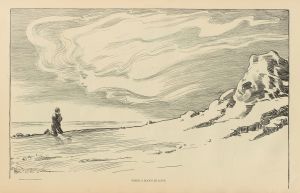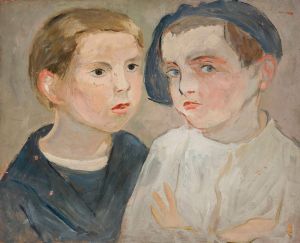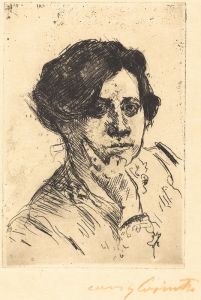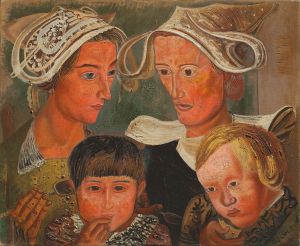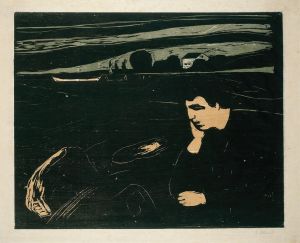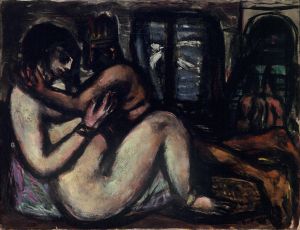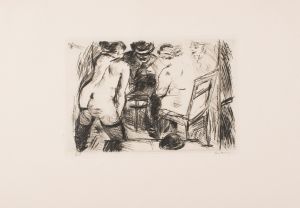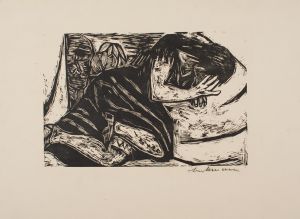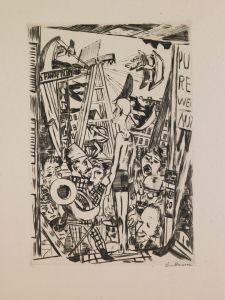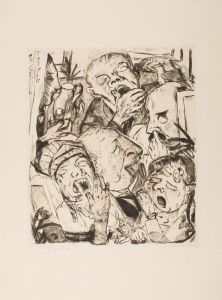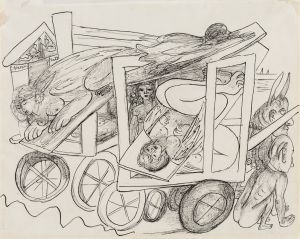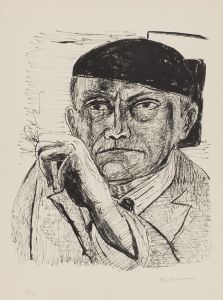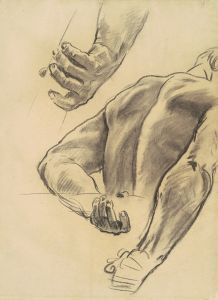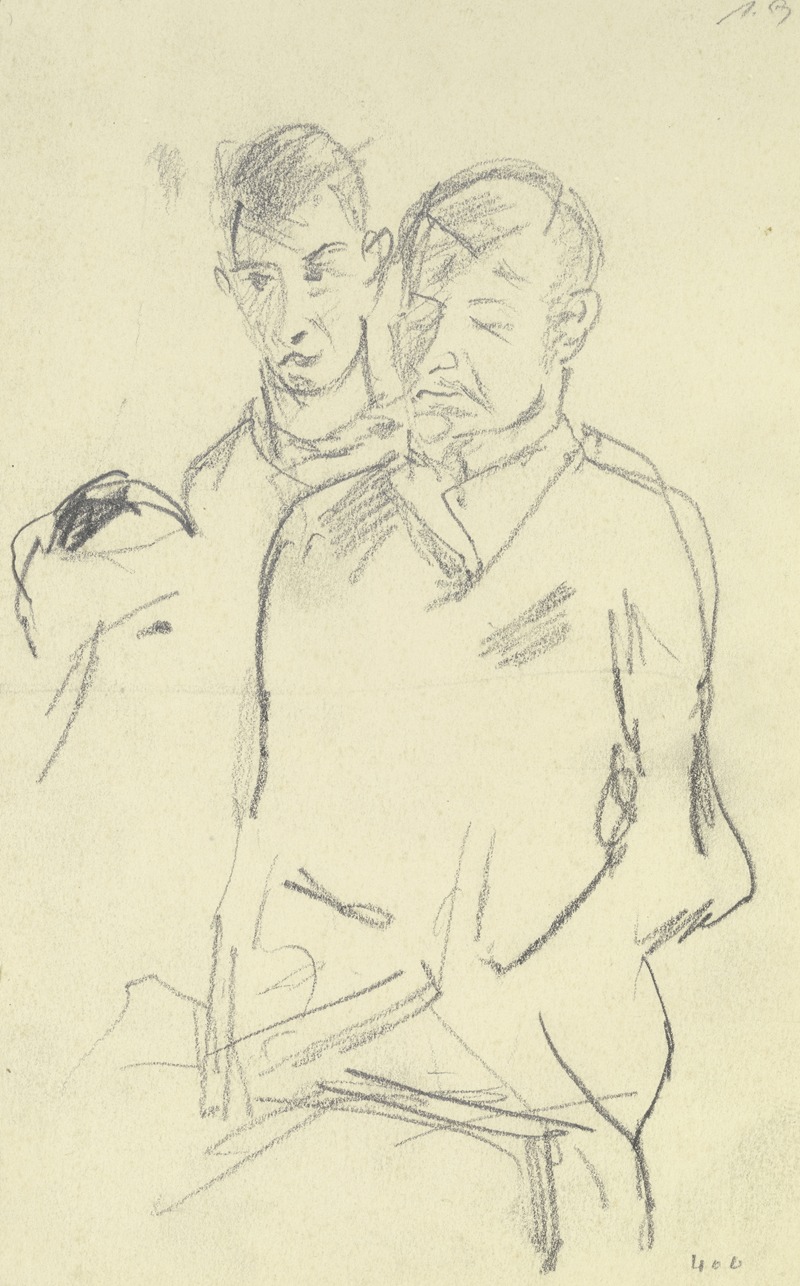
2 Zuhörer
A hand-painted replica of Max Beckmann’s masterpiece 2 Zuhörer, meticulously crafted by professional artists to capture the true essence of the original. Each piece is created with museum-quality canvas and rare mineral pigments, carefully painted by experienced artists with delicate brushstrokes and rich, layered colors to perfectly recreate the texture of the original artwork. Unlike machine-printed reproductions, this hand-painted version brings the painting to life, infused with the artist’s emotions and skill in every stroke. Whether for personal collection or home decoration, it instantly elevates the artistic atmosphere of any space.
Max Beckmann's painting "2 Zuhörer" (translated as "Two Listeners") is a notable work by the German painter, who is recognized for his contributions to the Expressionist movement. Beckmann, born in 1884 in Leipzig, Germany, is renowned for his unique style that often blends elements of Expressionism, New Objectivity, and Symbolism. His works frequently explore themes of human experience, societal issues, and the complexities of the human psyche.
"2 Zuhörer" was created during a period when Beckmann was deeply engaged in exploring the human condition through his art. While specific details about the painting's creation date and its current location are not widely documented, it is consistent with Beckmann's broader body of work, which often features figures in introspective or enigmatic poses. The title, "Two Listeners," suggests a focus on the act of listening or observing, which is a recurring theme in Beckmann's oeuvre, where figures are often depicted in contemplative or interactive states.
Beckmann's style is characterized by bold lines, dramatic contrasts, and a vivid color palette, all of which contribute to the emotional intensity of his paintings. His works often include complex compositions with multiple figures, each contributing to a narrative or thematic exploration. In "2 Zuhörer," it is likely that Beckmann employs these stylistic elements to convey the psychological depth and tension between the figures, a hallmark of his approach to capturing the intricacies of human interaction.
Throughout his career, Beckmann's art was influenced by the tumultuous historical context of early 20th-century Europe, including the impact of World War I and the rise of the Nazi regime. His work often reflects a response to these events, with a focus on existential themes and the search for meaning in a rapidly changing world. Beckmann himself experienced significant upheaval, having been dismissed from his teaching position in Frankfurt by the Nazis in 1933 and subsequently going into self-imposed exile in Amsterdam before eventually moving to the United States.
While "2 Zuhörer" may not be as widely recognized as some of Beckmann's other works, such as his triptychs or self-portraits, it nonetheless embodies the artist's enduring interest in the dynamics of human relationships and the act of perception. Beckmann's ability to capture the essence of his subjects with psychological acuity and artistic innovation has cemented his place as a pivotal figure in modern art.
In summary, "2 Zuhörer" by Max Beckmann is a reflection of the artist's exploration of human interaction and perception, rendered in his distinctive style. Although specific details about the painting are limited, it remains an integral part of Beckmann's artistic legacy, illustrating his profound engagement with the themes of listening, observing, and understanding within the human experience.





